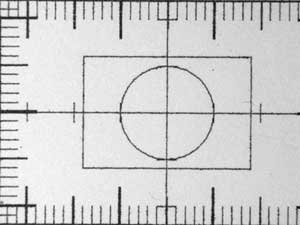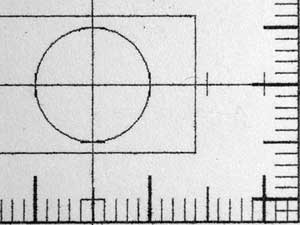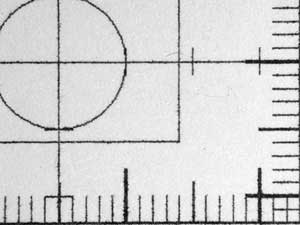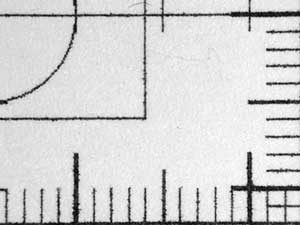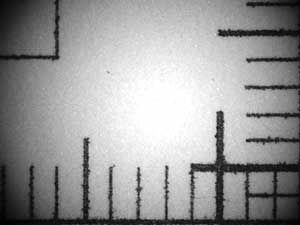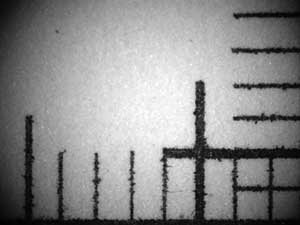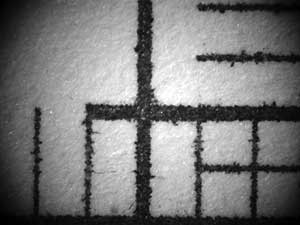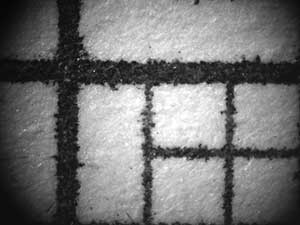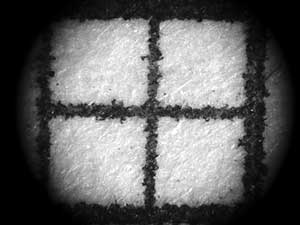| Lens combination used on 2100UZ | Front of camera - subject distance |
Front of Lens - subject distance |
Full frame image |
|
49-52mm step-up ring + Sigma Achromatic macro lens |
38 cm |
37cm |
|
| Olympus A-Macro lens |
30cm |
29cm |
|
| 49-52mm step-up ring + Sigma Achromatic macro lens + Sigma Achromatic macro lens |
24.1cm |
22.3cm |
|
| 49-52mm step-up ring + Sigma Achromatic macro lens + 52-49 step-down ring + Olympus A-Macro lens |
21.6cm |
19.4cm |
|
| 49-52mm step-up ring + Sigma Achromatic macro lens + Sigma Achromatic macro lens + 52-49 step-down ring + Olympus A-Macro lens |
17.4cm |
14.3cm |
This combination gives about a 1:2.7 magnification image on the camera's CCD
sensor image on the camera's CCD sensor (see notes at bottom of chart) |
| Adaptor + Rodenstock Rodagon enlarger lens
|
12.2cm |
7.5cm |
This combination gives about a 1:1.7 magnification image on the camera's CCD sensor image on the camera's CCD sensor (see notes at bottom of
chart) |
| Adaptor + Rodenstock Rodagon enlarger lens
|
10.2cm |
5.5cm |
This combination gives about a 1:1.4 magnification image on the camera's CCD sensor image on the camera's CCD sensor (see notes at bottom of
chart) |
| Adaptor + Rodenstock Rodagon enlarger lens
|
7.5cm |
3cm |
This combination gives the nearest to a life-size image (1:1) on the camera's CCD sensor (see notes at bottom of chart) |
| Flatters & Garnett 36mm microscope projection lens (on a temporary mount - so the data will need replacing when a more permanent adaptor is made) |
6.6cm |
1.9cm |
This combination give a magnification of about 1.6:1 on the CCD sensor (see
notes at bottom of chart) |
| Adaptor + Rodenstock Ysaron enlarger lens
|
5.1cm |
1.3cm |
This combination gives a magnification of about 2:1 on the CCD sensor (see
notes at bottom of chart) |

